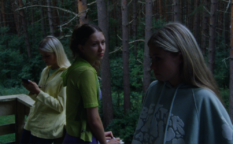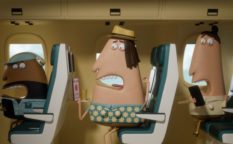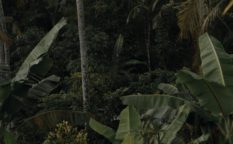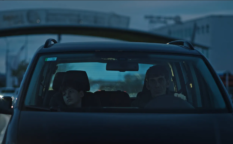Ernst Caramelle: “Nobody has influence on people’s attention”
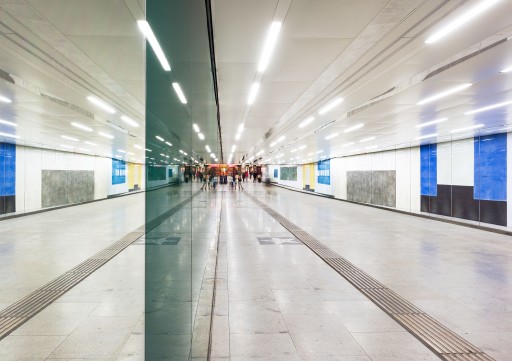
With his installation “Untitled” spread over eight fields on the elongated passage wall, Caramelle joins the fellow Tyrolean artist Peter Kogler in the permanent embellishment of the subway space at the Karlsplatz, Vienna’s busiest transit area.
Caramelle’s artistic solution for the busy subway passage was chosen among hundreds of works submitted by international artists at the competition initiated by KÖR (Kunst im öffentlichen Raum Wien = Art in Public Space Vienna) and WIENER LINIEN (Vienna Public Transport).
Around 200.000 commuters, tourists and passers-by walk daily through the long passage which also is a pedestrian connection between some of the most important spots in Vienna’s 1st district.
In his permanent installation “Untitled”, Caramelle leans on his experience with duplication and mirror reflections, known from his previous site-specific works. Worth mentioning are two important shows which gained a significant international recognition – at the Art Basel (2011) and the Wexner Center for the Arts (2012).
Colourful, simple geometric shapes painted directly on the wall are reflecting in mirrors inserted on the opposite wall. The artist has created the effect of an uneven zigzagging wall which embraces the space and changes its optical quality with passers-by’s movement.
KÖR & WIENER LINIEN have invited some of the most intriguing contemporary artists to participate in the competition, among them: Cerith Wyn Evans, Barbara Kruger, Sam Talor-Wood, Sarah Morris, Markus Schinwald and Gerwald Rockenschaub.
(for more information about the work of Ernst Caramelle, please use the link to the BAWAG Contemporary text, released on the occasion of the “Image bank” exhibition in 2001).
__________________________________________________________________________________________________________
INTERVIEW WITH ERNST CARAMELLE
(We spoke to the artist the day after the official opening)
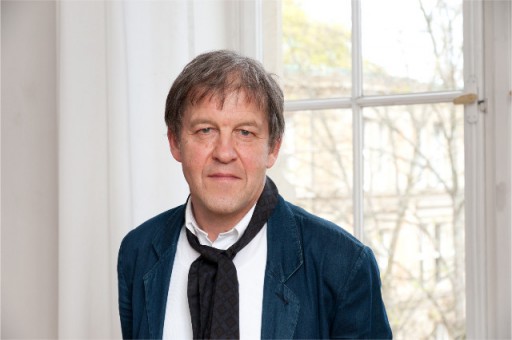
In your first publication “Blätter” from the late 1970’s, you stated that “all art is a fake”. How is that to be understood in relation to the Karlsplatz installation?
It’s one little statement which comes from a very important publication in which I laid groundwork for my artistic future. The thoughts are not really about fake, they are about what you see and the eternal dilemma if something is real or not. In a way, you can relate it to Karlsplatz because this piece which looks like something else, almost like a fresco standing in there for hundreds of years, changes its appearance depending on your physical closeness to it. In that sense, it is not a fake, but it gives you the impression of something without actually being the “real thing”.
What is so challenging about intervening in space?
I’m quite elaborate in what I do. Certain things interest me architecturally and others in terms of the context. What makes the Karlsplatz space so attractive isn’t the architecture itself – it’s a 70 meters long passage, the ceiling is much too low and it’s not aesthetically appealing. But I like the idea of public transportation and the fact that people who don’t have anything to do with art are just passing through. I wanted to do something which changes the space without imposing the piece to people in the sense that they would be forced to stand at one spot and look at it. Then again, there is a difference between space and space. I can not perform in the same way in a museum and in public space. I have few permanent installations which were all influenced by the particular place they were conceived for. I did a project for the new local government building in Innsbruck with four round objects hanging in the middle of the atrium. If you take the elevator up, one of the objects goes down. So you have a kind of a mobile – people go up and down, thus moving pieces of the installation.
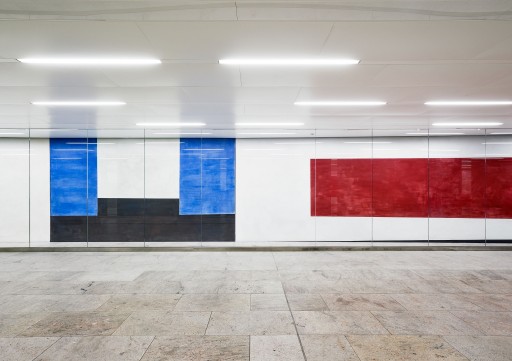
Photo: Iris Ranzinger, 2013
According to some statistics, people invest incredibly little time to have a close look at an art-piece. Your installation in the Karsplatz passage is very long, meaning that people, intentionally or subconsciously, absorb more impressions from your work.
Nobody has influence on people’s attention – some may look at my art-work and some will not pay attention to it at all. The installation is in the transit area and it’s up to you if you’ll stop in front of it or not.
It’s a place of incredible crowd density. What was your vision of the interactivity between your artwork and the passers-by in conceiving the concept?
I am not sure if I had an idea for the whole thing as such, but I was focused on the aspect of transition. That’s why I incorporated the other side of the work – on the opposite wall I placed mirrors and when you walk past you know that there’s something to your left or to your right hand side. You become aware of the wall painting but you also have a flash coming from the opposite direction. All art is about the dialogue between the spectator and the artist. That’s why lot of my works have the idea of a standpoint, of standing at a certain spot observing something, where the perception changes with movement. When you walk past my installation on Karlsplatz, you’ll see one thing from afar and something completely different when you approach it.
What kind of technique have you applied to break the flat mirror wall aesthetics on the opposite side of the installation?
It’s a mineral work, a very natural way of painting. It’s not acrylic, there are no chemicals involved and it combines wall with the paint because they have the same mineral substance.
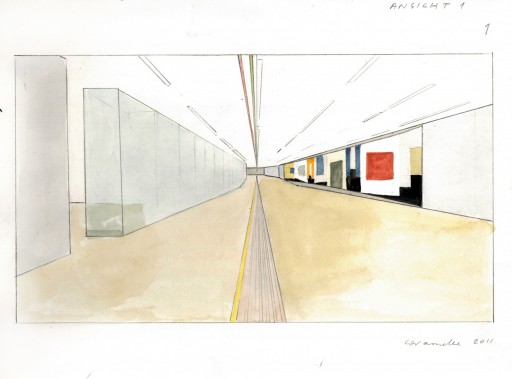
Which is totally in spirit of your painting tradition. You work a lot with watercolours and pigments.
I am attracted to simplicity and I aim to create something effective with as little material as possible. That’s just my way of seeing art which does not mean that I wasn’t exploring other means of expression, like video and photography. So it’s not the medium itself that bears the utmost importance, it’s the idea of the medium. The architecture of an actual space is a different condition than a small drawing or a publication.
You return to mirrors yet again…
My most famous work with mirrors was the one shown at the Art Basel (2011), bit I did a similar thing at the Secession in 1995 – which had much more focus on concrete stand-points. The visitors had to stand at one particular spot to be able to see something which is what usually happens if you attentionally address the deceiving aspect of reflected images. Mirrors occasionally appear in my work but only as means of showing certain ideas.
Even though you pieces seem to be static, they are somehow in movement
I just do my work and if it has this effect than I’m very happy, but it’s not part of my strategy. I do what I do.
How long did it take you to finalize the installation in the Karlsplatz passage?
I’ve started in mid-August and finished on September 1st. It took me two weeks to round it up but the painting process didn’t last longer than a week.
There is a video “Realization of the wall painting of Ernst Caramelle, time lapse” on YouTube showing you at work on the Karlsplatz. In prospect of concentration, how did it feel like creating the art-piece, protected from the noisy outside world only by easily removable barriers?
It was quite loud but also interesting because you could hear people commenting. At the beginning I had to work on the wall composition at night for the practical reason – the place wasn’t that much frequented. In order to see the progress of the composition but also to position big shapes, I had to open the barriers from 10pm to midnight. An occasional passenger would make a comment and some of them were hilarious. I almost felt like in a cabaret. One of the guys said “The slow horse reaches the mill” and the other told me “that doesn’t look straight”. I retorted: “well, maybe you can’t look straight” because he was obviously drunk. We also had typical construction-site stalkers. One guy was there every day – he was peeking in through the grids asking “When do you start today? What do you do now”.
The video was done by one of my students Tobias Talbot who originally set music to it, but eventually decided against it. He then recorded the genuine Karlsplatz passage noise and integrated it in the piece.













